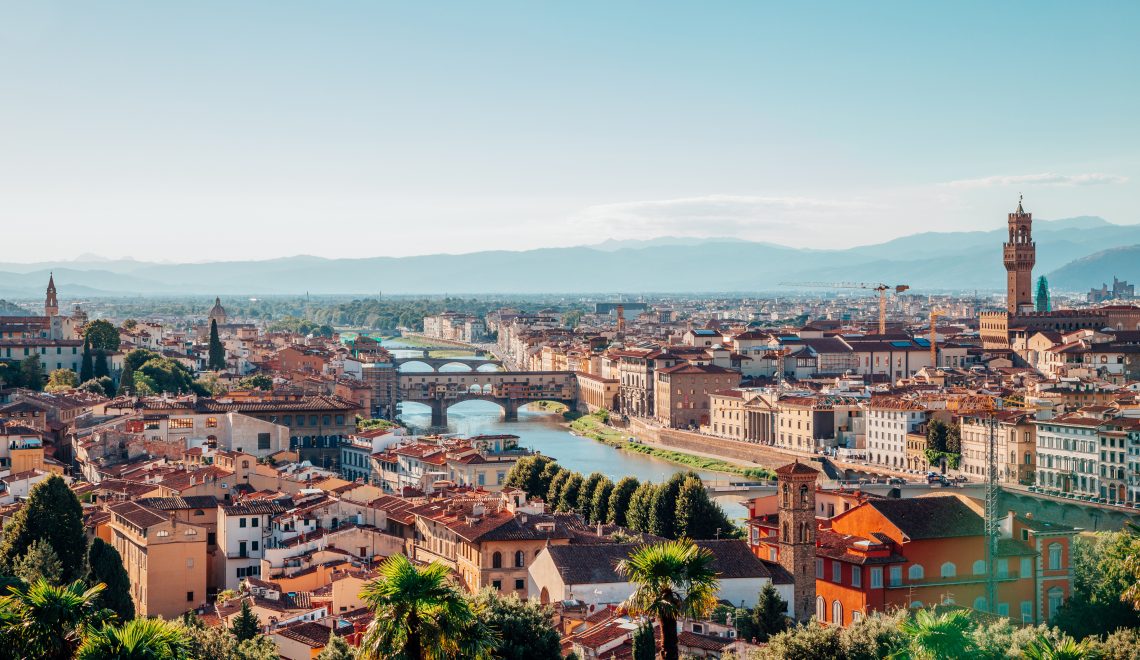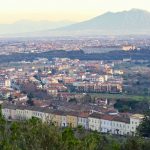
Italy’s UNESCO World Heritage Sites are a testament to the country’s rich cultural heritage and stunning natural landscapes. From ancient ruins to breathtaking landscapes, Italy offers a journey through history and nature like no other.
- Overview of UNESCO World Heritage Sites in Italy
- How Many UNESCO Sites Are There in Italy?
- Exploring the List of UNESCO World Heritage Sites in Italy
- Top 10 Must-Visit UNESCO World Heritage Sites in Italy
- Planning your journey to Italy’s UNESCO Sites
Italy’s UNESCO World Heritage Sites are a testament to the country’s rich cultural heritage and stunning natural landscapes. From ancient ruins to breathtaking landscapes, Italy offers a journey through history and nature like no other. In this guide, we’ll explore the different UNESCO sites in Italy and highlight some of the top sites you must visit.
Overview of UNESCO World Heritage Sites in Italy
Italy is renowned for its abundance of UNESCO World Heritage Sites, boasting more sites than any other country in the world. These sites are recognised for their cultural, historical and natural significance, offering visitors a glimpse into Italy’s diverse and rich heritage. The UNESCO list Italy includes a variety of locations, each with its own unique story and importance.
How many UNESCO Sites are there in Italy?
As of the latest count, Italy is home to an impressive 58 UNESCO World Heritage Sites. This number reflects the country’s dedication to preserving its invaluable landmarks and natural wonders. These sites range from the ancient ruins of Pompeii and Herculaneum, which offer a glimpse into Roman life, to the serene beauty of the Amalfi Coast and the Aeolian Islands. The historical centres of Florence and Rome showcase Renaissance art and ancient architecture. Each site on the Italy UNESCO sites map provides a unique journey through history, culture, and nature, making Italy an unparalleled destination for travellers. Whether you are an art enthusiast, history buff or nature lover, Italy’s UNESCO sites have something special to offer.
Exploring the list of UNESCO World Heritage Sites in Italy
Cultural sites
Italy’s cultural UNESCO sites are some of the most famous and visited in the world. The historic centre of Rome, with its ancient ruins and magnificent structures, is a highlight, featuring iconic landmarks such as the Colosseum, the Roman Forum and the Pantheon.
Florence, the cradle of the Renaissance, showcases masterpieces of art and architecture, including the Uffizi Gallery, the Cathedral of Santa Maria del Fiore, and Michelangelo’s David.
Venice, with its stunning canals and palaces like the Doge’s Palace and St. Mark’s Basilica, is a marvel of engineering and beauty. Other notable sites include the trulli of Alberobello, the Sassi of Matera, the historic centres of Siena and San Gimignano, and the mosaics of Ravenna.
The list of UNESCO World Heritage Sites in Italy is a treasure trove of human achievement and creativity, reflecting the country’s rich cultural history and artistic legacy. Each site offers a unique glimpse into the past, showcasing Italy’s role in shaping Western civilization.
Choose Italo for your train travel to Matera
Natural sites
In addition to its cultural riches, Italy also boasts several natural UNESCO sites. The Dolomites, with their dramatic peaks and stunning vistas, offer some of the best hiking and skiing in Europe.
Mount Etna, Europe’s highest and most active volcano, is a natural wonder that continues to captivate visitors with its frequent eruptions and unique landscapes. The Aeolian Islands, a volcanic archipelago in the Tyrrhenian Sea, provide an exceptional experience of natural beauty and geological interest.
Other notable natural sites include the ancient beech forests of the Apennines, the stunning Amalfi Coast and the Monte San Giorgio fossil site. These natural UNESCO sites highlight the incredible geological and ecological diversity of Italy, showcasing the country’s breathtaking natural beauty and offering unique opportunities for adventure and exploration.
Table of UNESCO Sites in Italy
| UNESCO Site Name | Location | Region | Year of Inscription |
|---|---|---|---|
| Historic Centre of Rome | Rome | Lazio | 1980 |
| The Sassi and the Park of the Rupestrian Churches of Matera | Matera | Basilicata | 1993 |
| Venice and its Lagoon | Venice | Veneto | 1987 |
| Piazza del Duomo, Pisa | Pisa | Tuscany | 1987 |
| Historic Centre of Florence | Florence | Tuscany | 1982 |
| Historic Centre of Siena | Siena | Tuscany | 1995 |
| Historic Centre of Naples | Naples | Campania | 1995 |
| Historic Centre of San Gimignano | San Gimignano | Tuscany | 1990 |
| Su Nuraxi di Barumini | Barumini | Sardinia | 1997 |
| Castel del Monte | Andria | Apulia | 1996 |
| The Trulli of Alberobello | Alberobello | Apulia | 1996 |
| Early Christian Monuments of Ravenna | Ravenna | Emilia-Romagna | 1996 |
| Historic Centre of Urbino | Urbino | Marche | 1998 |
| Amalfi Coast | Amalfi | Campania | 1997 |
| Villa Adriana (Tivoli) | Tivoli | Lazio | 1999 |
| Archaeological Area of Agrigento | Agrigento | Sicily | 1997 |
| Archaeological Areas of Pompei, Herculaneum and Torre Annunziata | Pompeii, Herculaneum, Torre Annunziata | Campania | 1997 |
| City of Verona | Verona | Veneto | 2000 |
| Historic Centre of Pienza | Pienza | Tuscany | 1996 |
| The Palazzi dei Rolli of Genoa | Genoa | Liguria | 2006 |
| Residences of the Royal House of Savoy | Turin | Piedmont | 1997 |
| City of Vicenza and the Palladian Villas of the Veneto | Vicenza | Veneto | 1994 |
| Cilento and Vallo di Diano National Park | Salerno | Campania | 1998 |
| Sacri Monti of Piedmont and Lombardy | Various | Piedmont, Lombardy | 2003 |
| Archaeological Area and the Patriarchal Basilica of Aquileia | Aquileia | Friuli Venezia Giulia | 1998 |
| Villa d’Este, Tivoli | Tivoli | Lazio | 2001 |
| Late Baroque Towns of the Val di Noto (South-Eastern Sicily) | Various | Sicily | 2002 |
| Etruscan Necropolises of Cerveteri and Tarquinia | Cerveteri, Tarquinia | Lazio | 2004 |
| Val d’Orcia | Siena | Tuscany | 2004 |
| Prehistoric Pile dwellings around the Alps | Various | Various | 2011 |
| The Longobards in Italy. Places of the power (568-774 A.D.) | Various | Various | 2011 |
| The Great Spa Towns of Europe | Montecatini Terme | Tuscany | 2021 |
| Ancient and Primeval Beech Forests of the Carpathians and Other Regions of Europe | Various | Various | 2007 |
| Venetian Works of Defence between the 16th and 17th centuries: Stato da Terra – Western Stato da Mar | Various | Veneto, Lombardy | 2017 |
| Ivrea, industrial city of the 20th century | Ivrea | Piedmont | 2018 |
| The Prosecco Hills of Conegliano and Valdobbiadene | Conegliano, Valdobbiadene | Veneto | 2019 |
| Rock Drawings in Valcamonica | Valcamonica | Lombardy | 1979 |
| Mantua and Sabbioneta | Mantua, Sabbioneta | Lombardy | 2008 |
| Rhaetian Railway in the Albula/Bernina Landscapes | Various | Lombardy | 2008 |
| Church and Dominican Convent of Santa Maria delle Grazie with “The Last Supper” by Leonardo da Vinci | Milan | Lombardy | 1980 |
| The Dolomites | Various | Trentino-Alto Adige, Veneto, Friuli Venezia Giulia | 2009 |
| Vatican City: The Vatican Museums, the Sistine Chapel, St. Peter’s Basilica | Vatican City | Lazio | 1984 |
| Cinque Terre National Park | La Spezia | Liguria | 1997 |
| Strade Nuove and the system of the Palazzi dei Rolli of Genoa | Genoa | Liguria | 2006 |
| Villa Romana del Casale | Piazza Armerina | Sicily | 1997 |
| Val di Noto | Noto | Sicily | 2002 |
| Medici Villas and Gardens in Tuscany | Various | Tuscany | 2013 |
| Venice and its Lagoon | Venice | Veneto | 1987 |
| Leaning Tower of Pisa | Pisa | Tuscany | 1987 |
| Syracuse and the Rocky Necropolis of Pantalica | Syracuse | Sicily | 2005 |
| Ferrara, City of the Renaissance, and its Po Delta | Ferrara | Emilia-Romagna | 1995 |
| Cilento and Vallo di Diano Villages of Ascetics (Hermits) | Salerno | Campania | 1998 |
| Sacred Forests of the Simbruini Mountains and Mount Soratte | Rome | Lazio | 2006 |
| Castelli Romani Regional Park | Rome | Lazio | 2009 |
Top 10 Must-Visit UNESCO World Heritage Sites in Italy
Rock drawings in Valcamonica
The rock drawings in Valcamonica are among the oldest forms of human expression, showcasing prehistoric art that dates back thousands of years.
The city of Verona
Verona’s well-preserved Roman amphitheatre and historic architecture offer a journey back in time, making it a top cultural destination in Northern Italy.
Book train tickets from and to Verona with Italo
The Dolomites
This stunning mountain range is known for its breathtaking beauty and offers a variety of outdoor activities, from hiking to skiing.
Travel through Veneto on Italo’s high-speed train
Historic centre of Siena
Siena’s mediaeval architecture and historic city centre are a must-visit, providing a unique glimpse into Italy’s past.
Historic centre of San Gimignano
San Gimignano, with its unique towers and well-preserved mediaeval buildings, offers visitors a fascinating look at life in mediaeval Italy.
Visit the beauties of Tuscany on Italo trains
Assisi, the Basilica of San Francesco and other Franciscan Sites
Assisi is renowned for its beautiful basilica and its association with St. Francis, making it a significant religious and historical site.
Archaeological areas of Pompeii and Herculaneum
These ancient Roman cities were preserved by volcanic ash and offer a unique glimpse into daily life during Roman times.
The Amalfi Coast
Famed for its stunning coastal landscapes, the Amalfi Coast is a natural wonder and a must-visit for its breathtaking beauty.
Sassi and the Park of the Rupestrian Churches of Matera
Matera is known for its ancient cave dwellings and rock churches, offering a unique and fascinating historical experience.
Choose Italo for your train travel to Matera

Valley of the Temples in Sicily
Sicily’s Valley of the Temples features some of the best-preserved ancient Greek temples, showcasing the island’s rich historical and cultural heritage.
Visit the beauties of Sicily with Italo’s trains
Planning your journey to Italy’s UNESCO Sites
Creating your Italian UNESCO travel itinerary
Planning a trip to visit Italy‘s UNESCO World Heritage Sites can be a rewarding experience. Start by creating an itinerary that includes a mix of cultural and natural sites. Use an Italy UNESCO sites map to plan your route and ensure you cover as many sites as possible. Consider starting in a major city like Rome or Florence and then exploring the surrounding regions.
Travel between Florence and Rome on Italo trains
Tips for visiting multiple sites efficiently
To make the most of your Italian UNESCO journey, consider travelling by train. Italo Treno offers convenient and efficient connections between major cities and UNESCO sites. Book tickets in advance to secure the best prices and ensure a smooth journey. Additionally, consider visiting sites during the off-peak season to avoid crowds and enjoy a more relaxed experience.







